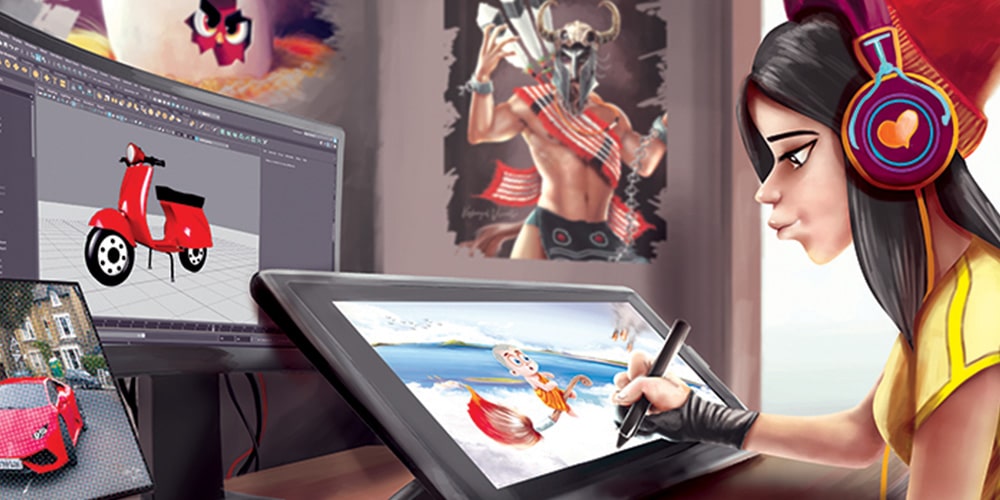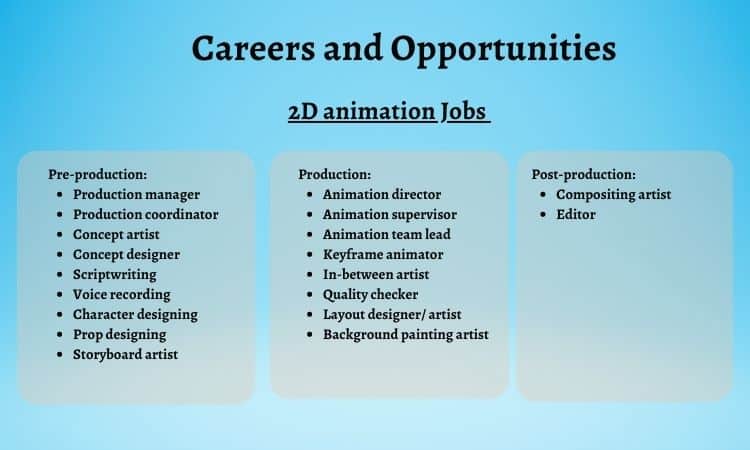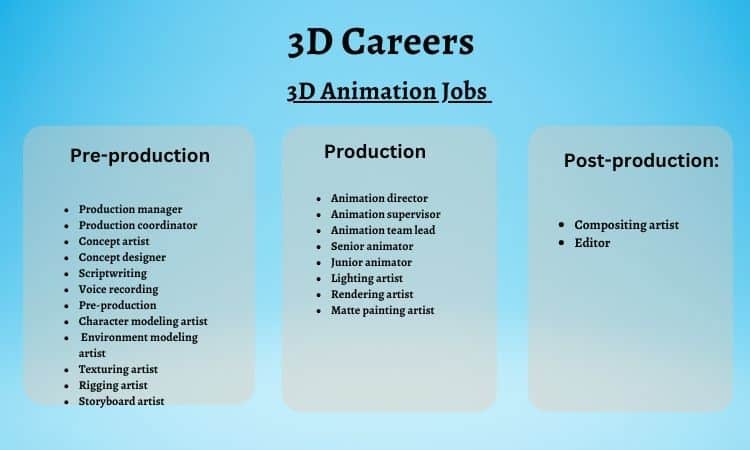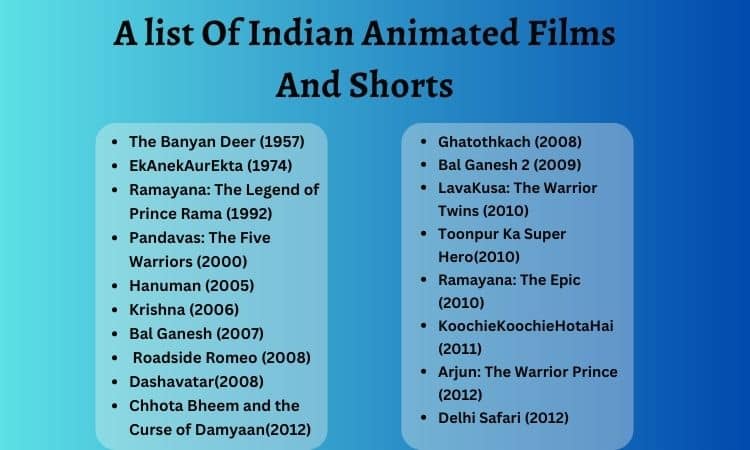
The Animation Industry
Table of Contents
Trends and strategies:
The rapid advancement of technology has made animation available to the masses and has made the animation industry emerge as one of the fastest-growing industries. The demand for animated shows is ever-expanding with the increase of cable and satellite TV, coupled with the ever-growing popularity of the Internet. In the past, animated shows were aimed at children below the age of nine. However, in recent years, shows such as The Simpsons, Family Guy and South Park that are aimed at teenagers and adults, have also found great success.
The major animation market includes the USA, Britain, Canada, Japan, France, Germany, and China among others. The current animation industry is influenced by large multinational studios apart from TV broadcast companies and cable channel companies. These companies are usually involved with the animation studios from pre-production to the post-production process. They fund, license, and syndicate the shows to other television networks.
Creativity and expansion of the target market are the major reasons for massive registration of patents for animation. The U.S. leads the market for animation patents mainly due to wide scope and demand for locally generated animation contents as well as the presence of top industry players such as Disney and DreamWorks. There is a huge demand for 3D animation across the globe, and most of the animation industry players such as Disney Enterprises (Inc.), Adobe Systems (Inc.), and Sony Corporation are trying to grab a share of the 3D market.
Innovative gaming techniques such as multiplayer online games and online role-playing games have given a new outlook to the gaming market. The U.S. registers the maximum number of patents due to government support and the presence of industry giants such as Microsoft Corporation, Electronic Arts (Inc.) and Disney among others.
A major driving force behind the animation market is government initiatives; whereas the gaming market is pulled up by greater penetration and accessibility to high-speed broadband internet. The lack of skills and piracy remain the restraining factors. Key issues in the industry today are consumers’ shift from buying to renting and dropping prices due to the rise of freemium models
The overall animation and gaming market is segmented based on animation and gaming sub-segments. Animation includes e-Education, web designing, and animation entertainment. Furthermore, animation entertainment includes segments such as movies, Visual Effects (VFX), TV & Broadcast, and Direct to DVD. Movies are further divided into 2D animation and 3D animation. Gaming includes PC games, mobile games, console games, and online games.
The multinational studios influence various forms of partnership, co-production, and joint ventures. Many countries subsidize their national film industries, including the animation industry and thereby strategies such as co-production, have been adopted to explore the global market in animation.
Multiple disciplines involve drawing correctly from many disciplines to redefine issues outside of everyday barriers and reach solutions primarily based on a new understanding of complex situations. In this profession you can dedicate yourself to make different designs for different disciplines, there will always be a need of experts who can transmit a message through an image. You can retake the editorial, illustrator, institutional, animator, etc.
An upcoming trend is the outsourcing of Animation content to Asia. Co-production has emerged as a popular strategy for studios in many countries. The biggest beneficiaries have been China and India. The animation studios in China and India have become a popular destination for co-production partners of studios in Europe, Japan, and North America. The biggest advantage of co-production is that it provides flexibility while working with small studios and can bring in fresh ideas and talent from other countries.
This market is increasingly being tapped by North American film and television program producers. The major factors behind this shift of animation production to the Asia-Pacific region are low cost, lower labor rates, more powerful computer animation platforms, etc. when compared to North America and Europe. The bulk of outsourcing happens for 2D animation content with some amount of 3D content.
Licensing has also been extremely successful with the production of T-Shirts, Caps, Toys, etc. This merchandising has become a huge source of revenue for Animation companies. In Japan, several successful visual novels (manga) and video games have seen to the production of animated series like Pokémon, Monster Farm, and Detective Conan to name a few. Video games and movies are also relying on animation more so than ever. They are engaged in activities from pre-production to distribution as well as new sources of revenue such as DVD sales and intellectual property franchising
Animation Industry Growth
Animation and Gaming have a direct connection to each other. The global animation and gaming market is divided into four geographies: North America, Europe, Asia-Pacific and Japan, and ROW (Rest of the world). North America forms the largest segment with 42% of the overall share, followed by Europe and Asia-Pacific-Japan is the fastest-growing region with an expected growth of 19.08% from 2011 to 2016. The global animation and gaming market is expected to grow from $122.20 billion in 2010 to $242.93 billion by 2016.
Careers and opportunities:

The animation industry is vast. There are countless opportunities for passionate and skilled artists and animators alike. Interestingly, even with the ever-advancing technology, 2D animation ad drawing hasn’t lost its sheen. Even today skilled artists with a good knowledge of 2D are sought by studios all over the world.
- Constant learning is the key to keeping up to date, and it is possible to learn self-taught, with tutorials, or practice until you become an expert. The main thing is to innovate in the techniques you use.
- Concept Artists: These are artists who convey an idea through visual means like sketches, paintings. They are mainly employed by the entertainment industry like film, comics, games and animation studios. Their application also extends to product design and architectural design. Concept artists are known for their style, creativity, and ideas.
- Storyboard Artists: A storyboard is a visual representation of the story. Very much akin to a comic strip, storyboard communicates the flow of the story and the actions in a particular scene. Storyboard artists have to tell a story through drawings. Storyboard artists must know camera angles and have a talent for storytelling.
- Layout Artists: Layout artists are those who create layouts for animated movies. Layouts are the locations where the scene in the movie takes place. These artists create locations based on the movie. Layout artists are known to have good drawing skills and perspective knowledge. (E.g. two-point and three-point perspectives)
- Key animators: These animators manage pre-production by determining how the animation will be executed. Key animators also supervise the work of a team of animators and guide junior crew members. All animators must have a good sense of timing and strong animation principles.
- Inbetweeners: These animators perform an important function. After the keyframes/scenes are drawn by the animator, inbetweeners take the images and draw the character’s movements between each keyframe/scene. They also may take direction from assistant animators, animators, and animation directors at animation production studios.
- Clean-up-artists: Part of the workflow in producing traditional animation or hand-drawn animation involves the cleanup versions of rough animation that are created. In larger studios, this task is given to the animator’s assistant or a clean-up-artist. The clean-up-artist is responsible for the final line and finished look of the shot. Although this includes several points, it is important to note that this career allows you to work on something you like and in which you can express yourself in various ways, which creates the freedom to decide the needs you want to meet in terms of projects that you accept.
- Color-key-artists: A Color key artist creates color schemes that are appropriate for different lighting situations. For example: “at night’ or “underwater.” They work primarily for animation companies, production studios, and gaming companies.
3D Careers:

3D Modelers: This refers to a person having a strong knowledge of form, volume, and anatomy. They make models of objects, environments, and characters for animation.
3D Texture Artists: They create a surface texture for 3D modeled characters, objects or environment.
Rigging artists: Rigging artists create virtual skeletons for characters, objects or the environment by making them animation ready.
3D Animators: Animators who manipulate rigged characters, objects and environments into keyframes based on the scene, mood and script. Though computers automatically create the animation sequence in between keyframes, 3D animators have to ensure that the smoothness of the resulting animation sequence happens. It depends on their keen understanding of expression, movement, and timing.
Lighting artist – They create variations of shade, color intensity, and shadows.
Rendering artist – A rendering artist may combine models, textures, animation, lighting and produce the correct blend in the form of individual frames of animation.
Special effect artist – They ensure live-action footage with computer-generated imagery.
Compositor – Their Job is to bring all the different characters and backgrounds into a single animation frame.
Indian animation industry:
The history of Indian animation may not relate to the distant past, but isn’t as lengthy as other countries, but it isn’t short either.. Agkadyanchi Mouj(1917)or “Fun with Matchsticks” was India’s first animated film made by Dhundiraj Govind Phalke or Dadasaheb Phalke as he is prominently known. The cartoon film unit was started by the film division which was set up in the 1940s. The unit played a significant role in developing Indian animation.
G.K. Gokhale along with Clair Weeks produced the first animated film “The Banyan Deer” (1957), from the Cartoon Films Unit of the Film Division of India. Ram Mohan, one of the important animators in India, worked for them. Later, he would go on to set up his studio in 1972. In 1955, the children’s film society of India had been established by the Indian government. The organization would go on to produce many animated films.
The general theme of Indian animation is religion or biographies of eminent kings or personalities. It can be said that the main role of Indian animation was to propagate Indian culture. The animation was mainly broadcasted on TV through local TV stations or channels.
One of the notable animated films, Ramayana: The Legend of Prince Rama (1992)was directed by a Japanese director Yugo Sako along with Ram Mohan. Another popular 2D animated film was Hanuman (2005that was created by Silvertoons.
It was during 2004–2005 that the Indian animation industry came into the spotlight as an outsourcing friendly environment from an economic standpoint was ensured. Popular studios like Walt Disney, IMAX, Warner Bros. and Sony signed multi-million dollar contracts with Indian animation studios. Thus, cities like Mumbai, Bangalore, Hyderabad, and Chennai have become the major animation hubs.
Ek Anek Aur Ekta (1974), was a landmark animated short film from the Films Division of India. Its objective was to teach children the value of unity. It used to be frequently broadcasted on India’s state-run television channel Doordarshan. The first Indian animated television series was Gayab Aaya which was aired in 1986 and was directed by Suddhasattwa Basu.
The first Indian 3D and VFX were done for a television series titled Captain Vyom. The first Indian 3D animated film was Roadside Romeo which was a joint venture between Yash Raj Films and the Indian division of the Walt Disney Company. It was written and directed by Jugal Hansraj.
A list of Indian animated films and shorts:
India has enjoyed a host of animated films and shorts since the release of its first animated film, The Banyan Deer. As the Indian animation industry grew over the years, so did the frequency of theatrical releases and achievements of our animation.

As shown above, we have slowly, but surely increased the number of theatrical releases over the years. This list will continue to grow as our interest and passion for animation are further explored in the coming years.
Current Trends of Indian Animation Industry:
India is a popular hotspot for outsourcing companies based in the USA, France, etc. According to NASSCOM, the size of the Indian animation industry in 2008 was $ 107 million, out of which about 27% is for domestic consumption. The rest (73%) is offshore demand. Indian animation studios prefer outsourcing work as it is a bigger business than the domestic market. In other words, the domestic animation market in India is still in its infancy and the popularity of Indian animation in India is yet to catch up. This is because India is currently producing animated shows and films mostly for children under the kindergarten and pre-adolescents age range. This practice has led to the creation of subpar TV animated shows and films aired on kids’ channels like Pogo (India), and Disney (India). Research has also shown that the most popular animated TV shows and films are licensed productions from foreign countries, mainly the USA and Japan.
India is a popular hotspot for outsourcing companies based in the USA, France, etc. According to NASSCOM, the size of the Indian animation industry in 2008 was $ 107 million, out of which about 27% is for domestic consumption. The rest (73%) is offshore demand. Indian animation studios prefer outsourcing work as it is a bigger business than the domestic market. In other words, the domestic animation market in India is still in its infancy and the popularity of Indian animation in India is yet to catch up. This is because India is currently producing animated shows and films mostly for children under the kindergarten and pre adolescents age range. This practice has led to the creation of subpar TV animated shows and films aired on kids’ channels like Pogo (India), and Disney (India). Research has also shown that the most popular animated TV shows and films are licensed productions from foreign countries, mainly the USA and Japan.
The animation industry has seen a growth spree since 2004 and is steadily continuing to grow. It has become one of the fastest-growing industries. It has been projected to grow by $2.9 billion by 2015 from the present $1.8 billion. The growth estimates are projected by NASSCOM, who maintain that the industry requires the availability of skilled workforces and resources in vast numbers.
At present, India has a shortage of skilled animators and companies lack the necessary infrastructure required to get started. The industry is still heavily reliant on outsourcing segments of the international market. But despite this, the domestic market is expected to grow in the future. The gaming sector is poised to witness a massive 72% growth to reach $424 million.
Lack of a developed domestic market, India’s general view on animation, lack of enthusiasm and professionalism, along with minimal investment in technology are some of the problems currently faced by the Indian animation industry. The current problems must be overcome on a priority basis to put the industry on its growth trajectory.
Animation studio and companies in India:
Animation studios in India including television channels and production studios.
DQ Entertainment
Technicolor India
Prana Studios
DreamWorks Dedicated Unit
Reliance Media Works
Toonz Animation India
Tata Elxsi
Crest Animation Studios
Videogame production studios and companies in India:
Electronic Arts India
Game Shastra
Ubisoft
Gameloft
Zynga
Dhruva Interactive
Lakshya Digital
Electronic Arts India
Game Shastra
Ubisoft
Gameloft
Zynga
Dhruva Interactive
Lakshya Digital
Akbar and Birbal: It was aired on Hungama TV. It showed the wisdom of Mughal Emperor Akbar’s minister, Birbal.
The Adventures of Tenali Raman: The Adventures of Tenali Raman (26 X 11 min) is India’s first animated 2D television series by Toonz Animation India. This series has another version which was broadcast in 2009 – 2010.
Little Krishna: 13 episodes 3D animated series produced for a global audience by BIG Animation Pvt. Ltd. and The Indian Heritage Foundation in both Hindi and English. Aired on Nickelodeon in May 2009.
ChhotaBheem: Superhit series on Pogo ‘ChhotaBheem’ produced by Green Gold (co-production with Turner International). It started as a 13-episode TV series, and based on the popularity it got extended and more than 312 episodes were delivered and work is underway on more episodes.
Krishna Balram: 26 episodes of 22 minutes duration each, follow through the capers of Krishna, Balram, and Radha. Done once again by Green Gold Animation. This series aired on Cartoon Network.
Shaktimaan Animated: It is the animated sequel to the hugely successful Shaktimaan live-action series from the 1990s. The animated series is aired on SONIC.
Keymon Ache: by DQ Entertainment, India. Keymon Ache is a crazy mix of fun, frolic, and naughtiness. The title character of the show is a magical creature who comes into the home Rohan Tendulkar bringing with him loads of magic, love, and laughter.
Asian Animation Industry:
For nearly forty years, Western studios had established and maintained production facilities in Asia. The first was in Japan followed by South Korea, Taiwan, the Philippines, Malaysia, Singapore, Vietnam, Thailand, India, Indonesia, and China. Asia was an ideal choice for the animation industry, as about 90% of all American television animation is produced in Asia.
This procedure is commonly used for pre-production, which involves preparing the script, storyboard, and exposure, which is done in the United States or other countries. This is later sent to Asia for production which involves drawing cels, coloring by hand, inking, painting and camera work.
Once production is done, it is sent back to the U.S. or other headquarters for post-production work such as film editing, color timing, and sound. Asian animation industries are in support of outsourced work as it provides employment and skills for young people, brings in foreign capital and adds on to the creation or enhancement of the local animation industry. Offshore animation has led to the creation and nurturing of many local industries.
Here we conclude The Animation Industry. If you want to know more about animation, please visit our website www.animaster.com and download the e-book. It’s free!
New opportunities for budding student
Animation, 3D, and Vfx opens a whole new world of opportunities that you have never thought of before, especially in India, if you think animation is a course for you then head over to the famous city of Information and technology i.e. Bangalore, that has a big potential as the best Best Animation College in Bangalore can provide you with the animation skills that is needed to come into this profession and provide the roles of animation in the animation with the use of degrees like Bsc visual communication, BA Visual Communication, Bsc Viscom that will help you provide the professional skills to become a proper animator.
Animaster made an attempt to give you information on the topics that are very relevant and basic in the field of animation. We have tried to explain you in the simplest form.
FAQs
Ques: What are the main steps involved in animating a character?
Ans: The major 4 steps are:
Blocking out: In this step the main static figure is put into all environments.
The Key poses: In this step, the main key features of movement are directly defined.
Insertions of in-between: In this step the frames and in-betweens are added
Fine Tuning: Through this step the animation is made realistic.
Ques: What is the importance of character design in 3D animation?
Ans: The Character design is extremely important as it provides the basics of how the character will be and how it will move. The designing process involves sketching, modelling and prototyping.
Ques: What are the different software programs used for 3D computer animation?
Ans: There are many softwares that are available for 3D computer animation like Maya, Cinema 3D and Maya Bender. The different things allows for the creation of models, animations and textures.



